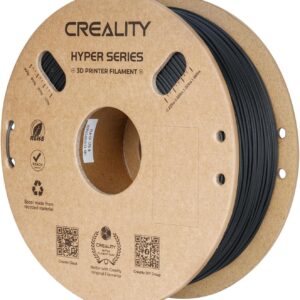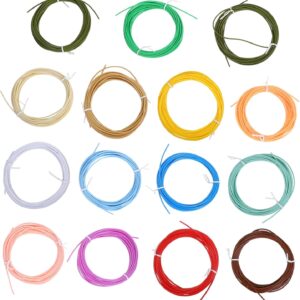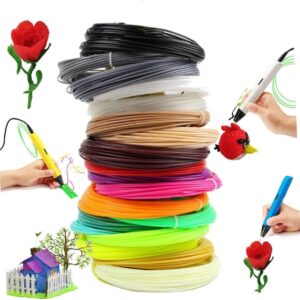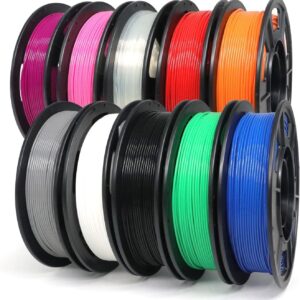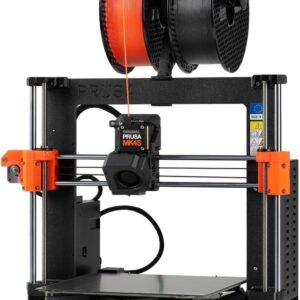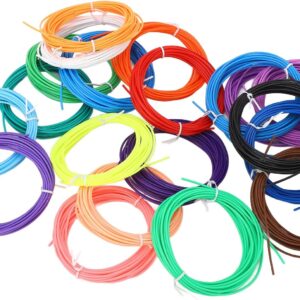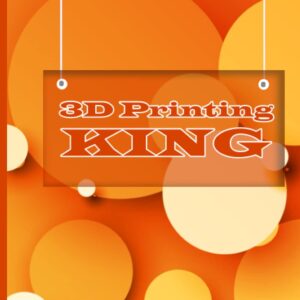On the outskirts of Valencia lies a little piece of history: not just part of the first 3D printer ever made, but the first 3D printing company in the world – 3D Systems, co-founded by Charles Hull.
On October 10, 1983, Hull called his wife, Anntionette, to drive to the engineering laboratory at San Gabriel UVP Inc., where they both worked at the time. That night, Hull and Anntionette knew history had been made – he had built the first-ever 3D printer.
“I opened the door to the engineering department and Charles said, ‘The world as we know it will never be the same.’ I printed my first part.’ That night I fell to the floor crying – we both did,” Anntionette said.
 Charles Hull, left, with his wife Anntionette, right, at 3D Systems in Valencia. Habeba Mostafa/The Signal
Charles Hull, left, with his wife Anntionette, right, at 3D Systems in Valencia. Habeba Mostafa/The Signal
Hull, who goes by the name Chuck in his professional life but Charles at home, spent the 1980s filing patents, the first for stereolithography equipment in 1984 through UVP, and coining the term “stereolithography.”
According to the 3D Systems website, stereolithography “uses an ultraviolet laser to precisely cure photopolymer cross-sections, converting them from liquid to solid. Parts are built directly from CAD data layer by layer into prototypes, investment cast models, tooling and end-use parts.”
A successful prototype meant Hull discovered the key to developing a successful printer and continued to develop the technology over the years.
In 1987, 3D Systems Corp. launched the first stereolithographic apparatus, which “enabled the production of complex parts layer by layer in a fraction of the time that would normally be required.” Hull filed more than 60 patents related to the technology, becoming the godfather of rapid prototyping movement and invented the STL file format, which is still used today,” said Autodesk.

 Charles Hull with President Biden on October 24th. Photo courtesy of Anntionette Hull.
Charles Hull with President Biden on October 24th. Photo courtesy of Anntionette Hull.
Hull, who was inducted into the National Inventors Hall of Fame in 2014 and received the European Inventor Award, traveled with Anntionette to the White House on October 24 to receive the National Medal of Technology and Innovation.
Hull was honored by President Joe Biden and received a medal. He received the nation’s highest honor for technological achievement, “given by the President of the United States to America’s leading innovators,” according to the United States Patent and Trademark Office.

 Anntionette Hull holds a piece of the first part of the printer, created on October 10, 1983. Habeba Mostafa/The Signal
Anntionette Hull holds a piece of the first part of the printer, created on October 10, 1983. Habeba Mostafa/The Signal
The Hulls plan to donate the remaining portion to the Smithsonian Museum in the near future to accompany the first 3D machine already on display.
Nathan Shyam, a local eighth-grader who has developed two 3D printers, visited 3D Systems with his family to learn more about Hull and Anntionette’s journey – a journey that began 41 years ago and technology has evolved ever since.
Hull previously worked at DuPont, developing equipment for chemists, before moving to UVP (now Analytik Jena AG) to focus on UV curing.
As an engineer who designed plastic parts, Hull reflected on the time he previously spent designing a part and waiting for it to return to his standards.
“A molder makes the part and a few weeks later, maybe a few months later, you get the part and say, ‘Oh, that’s not right.’ So go through the cycle again and again until you get the part right. And I said, ‘Is there a way to get these parts really quickly?'” Hull said.

 Nathan Shyam (left) looks intently at the part of the original 3D printer next to its inventor Charles Hull. Habeba Mostafa/The Signal
Nathan Shyam (left) looks intently at the part of the original 3D printer next to its inventor Charles Hull. Habeba Mostafa/The Signal
Using efficiency as an incentive to try to create his own pieces, Hull convinced his boss to work in the now historic laboratory and spend nights and weekends perfecting his vision.
Nearly six months later, Hull revolutionized technology, spent years perfecting the craft, and created a company that now employs 2,000 people and inspires the next generation like Shyam.

 Nathan Shyam, left, admires Hulls’ medal presented to him by President Biden on Oct. 24. Habeba Mostafa/The Signal
Nathan Shyam, left, admires Hulls’ medal presented to him by President Biden on Oct. 24. Habeba Mostafa/The Signal
While 3D printing is now used in various industries such as automotive, aviation and even healthcare, nothing of such a high caliber comes with its challenges.
“The initial materials I had for coding furniture weren’t very good. “The process of developing materials that have sufficient properties for commercialization has been a major challenge,” said Hull. “Starting a business, raising capital, etc. is a big challenge. And of course there are new challenges every year. How we say it: High-tech stuff isn’t easy. You have to overcome problems.”
Regardless of the problems he faced, Hull’s determination has impacted various areas over the years, such as education.
“3D printing is widely used in schools and the children often get inspired because it is much easier to learn and communicate about tangible things than to write something down and so on.” It’s a great learning tool, especially in terms of Engineering, manufacturing and things like that,” Hull said.
Additionally, Hull is confident that the growth of 3D printers will continue to make the ideas kids have become reality.
“I am always confident that 3D printing will have a future for younger generations. I think the good thing about it is that it has become a kind of routine tool for younger generations – it frees up their thinking, [with questions such as] “‘What should I do, what can I do?’ It’s also an innovation tool,” Hull said.

 Nathan Shyam (right) holds up the part of the original 3D printer while his father Shyam Raghavan (left) takes a photo. Habeba Mostafa/The Signal
Nathan Shyam (right) holds up the part of the original 3D printer while his father Shyam Raghavan (left) takes a photo. Habeba Mostafa/The Signal
The future of 3D printing continues to evolve with technological advancements.
“There are many applications in aerospace, so we have worked with all major aircraft manufacturers. The applications are different depending on what you’re doing on the plane, but if it’s a metal part, we have a process where instead of printing a solid part, we print a part that’s almost hollow,” Hull said. “So just a little matrix that holds everything together. And that becomes the pattern for metal casting.”
Hull, at the forefront of changing industries, is not slowing down. Innovations for health and supporting people who could use this technology are next on Hull’s agenda.
“We are working on transplantable lungs and transplantable kidneys. We print out the framework for it and then apply the cells etc to bring it to life,” Hull said.
Anntionette is proud of her husband’s commitment to using his expertise to benefit accessible healthcare resources.
“Two or three years ago, Charles said, ‘Well, darling, would you come here?’ I want to show you something on the computer. “I re-deciphered the code for the scaffold that can be transplanted into a human once they harvest the cells, grow them in a petri dish, and then implant them into the three-dimensional scaffold,” Anntionette said. “You will never in your life, in your children’s lives, need a transplanted body part from another human being.”


